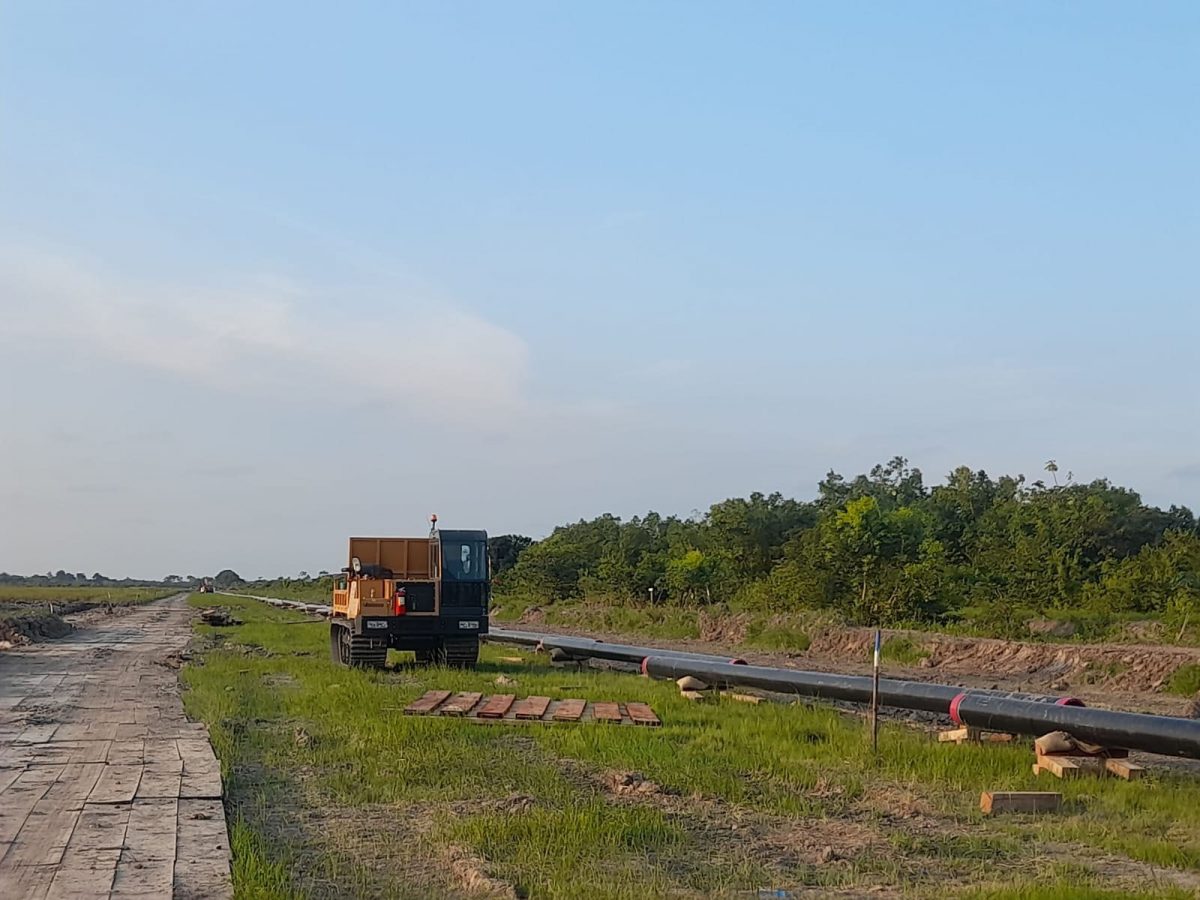Despite several unresolved issues relating to the proposed Gas-to-Shore project, the laying of pipelines has begun on the West Bank of Demerara.
The Sunday Stabroek yesterday visited the village of Java where the residents have a front row view of the ongoing construction.
However, there still remains questions relating to the total cost of the project, the owners of the separate components, Guyana’s share of the total cost, the availability of a feasibility study showing capital and operation costs, and the proposed rates for resale of the electricity.
Added to that, land use still remains a major issue, as is the compensation for lands taken, and what land is being taken.
The Gas-to-Energy project will establish infrastructure so that natural gas can be transported from the Stabroek Block’s Liza oilfield to an integrated gas processing facility at Wales, West Bank Demerara. The project will deliver natural gas liquids (NGL) and dry gas to the Government of Guyana.
A subsea pipeline is expected to be installed on the seafloor to transport natural gas from the Liza field to an onshore pipeline on the West Coast of the Demerara River.
Onshore, a pipeline will deliver the gas to an integrated facility in Wales. At this facility, a NGL processing plant will treat the gas to extract NGLs for commercial use, and a 300-megawatt (MW) power plant will use the dry gas to generate electricity for domestic use. It is expected that cost of electricity for consumers will be reduced by some 50 per cent. Currently, the power utility, Guyana Power and Light (GPL), provides electricity at a rate of 15 US cents per kilowatt hour.
This is a joint project between the Government of Guyana and Exxon-Mobil at a projected cost of US$1.7 billion.
When completed, Guyana will have a natural gas-fired power plant and natural gas liquids plant, capable of producing at least 4,000 barrels per day, including the fractionation (or separating out) of liquefied petroleum gas (LPG).
ExxonMobil is expected to deliver the completed pipeline to the power plant by the fourth quarter of 2024 to achieve commissioning and testing of the power plant by the end of 2024. Guyana is expected to save some US$500 million annually after paying ExxonMobil US$55 million each year for the12-inch pipeline.
This US$55 million payment will come from cost oil and would be a “fixed price” for the next 20 years.
The NGL plant will be owned by the Government of Guyana and prior to the conclusion of the construction, an international firm will be competitively selected to operate the project to international standards and best practices.
With development well underway, the mapping of other power lines has been included, as well as the Provision of an Engineering, Procurement and Construction (EPC) Services contract, which will see the installation of transmission lines and substations for the integrated NGL Plant for the 300 MW Power Plant.
Kalpataru Projects International Limited (KPIL) of India was awarded the contract for this project which is expected to be completed next year and is expected to cost some US$159 million.






